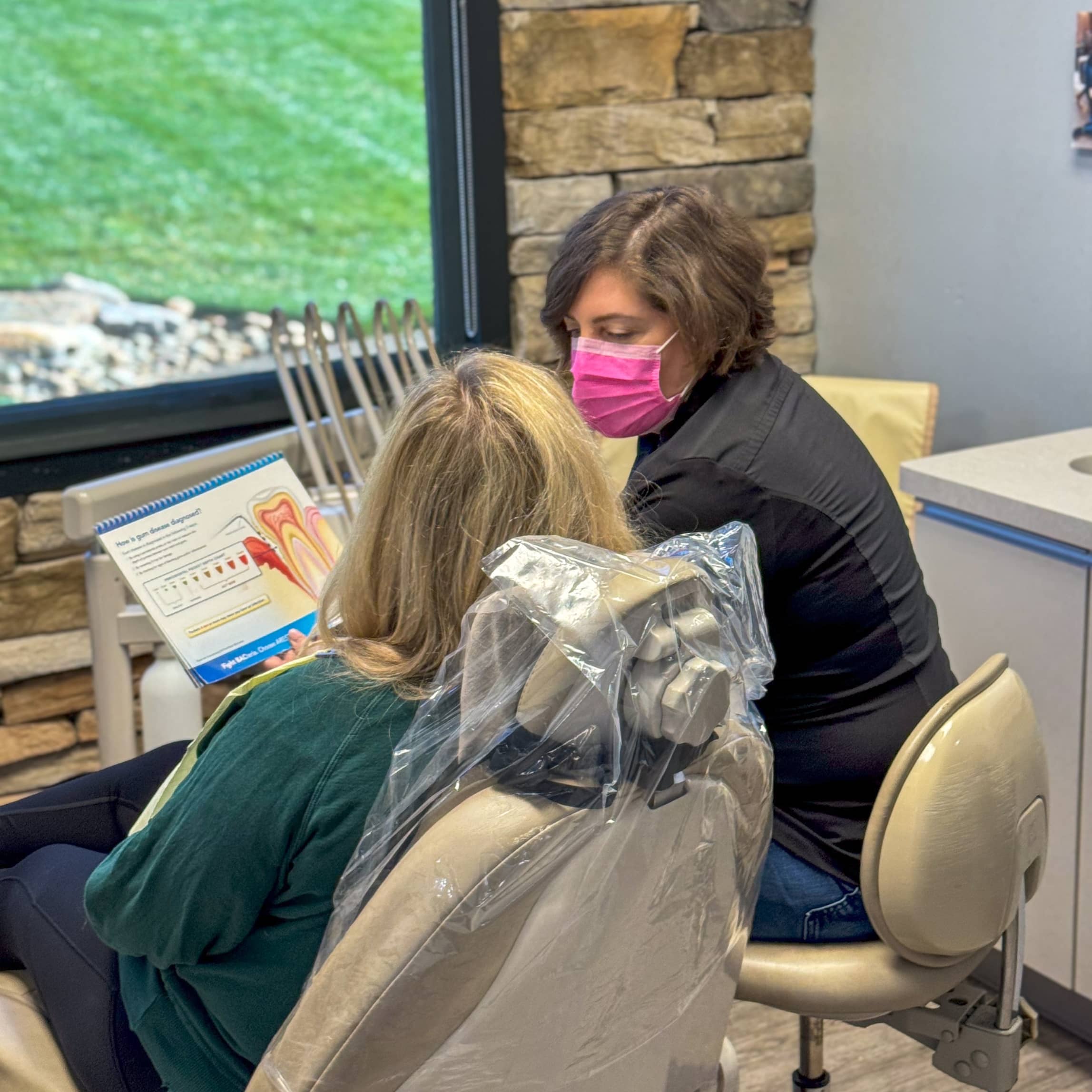Comprehensive General Dentistry
for Your Whole Family
Expert Care in a
Welcoming Environment
At Bynum Aesthetic Dentistry, we believe in providing exceptional dental care in a welcoming and comfortable environment. Our experienced team is dedicated to keeping your smile healthy at every stage of life, from routine cleanings to advanced preventive care. We understand that going to the dentist can sometimes feel intimidating, but with our state-of-the-art technology and compassionate approach, we make every visit a positive experience. Whether you’re coming in for a simple checkup or a more in-depth procedure, our focus is on making sure you feel confident and cared for every step of the way.

A Fun, Comfortable Experience Every Time You Visit
We go beyond just dental care—we strive to make every visit enjoyable. Our Simpsonville dental office is designed to help you relax and feel at home from the moment you walk in. Enjoy a snack from our complimentary snack bar in the waiting room, and when you’re ready for your appointment, settle into our massage chairs in the treatment rooms for a soothing experience. While you’re in the chair, indulge in a soothing paraffin wax hand treatment, enhancing your comfort throughout your visit. Our family-like atmosphere welcomes patients of all ages, ensuring that everyone feels comfortable and cared for. We believe that dental visits should be stress-free and even fun, and we take pride in creating a welcoming space for our patients.
Our General Dentistry Services
With years of experience in providing comprehensive general dental care, our team is dedicated to ensuring you have everything you need for optimal dental health. From routine checkups to advanced preventive treatments, we offer a full range of services to keep your smile healthy and bright.
Dental Cleanings & Exams
Keep your smile healthy with comprehensive cleanings and exams, including digital X-rays, to catch issues early and maintain optimal oral health.
Gum Disease Prevention & Treatment
Gum disease often goes unnoticed, but we use advanced techniques to treat and prevent it. If you notice bleeding, discomfort, or other signs of periodontal disease, our team is here to help restore your oral health.
Dental Sealants
Protect your teeth from cavities with thin, protective sealants that block out harmful bacteria, especially on the chewing surfaces of your molars.
Dental Extractions
We perform tooth extractions with precision and care, ensuring your comfort while promoting overall oral health.
Oral Cancer Screenings
Our dental checkups include a thorough oral cancer screening, ensuring we catch any early signs of abnormalities. Early detection is critical, and we are proud to offer this important service as part of our comprehensive care approach.
Emergency Dental Care
Get swift and expert care for sudden dental emergencies, ensuring your oral health is in good hands when you need it most.
New Patient?
SCHEDULE YOUR FIRST VISIT
We can’t wait to welcome you to Bynum Aesthetic Dentistry! Schedule your first appointment and experience personalized, comfortable dental care in a fun, family-like environment.
Explore our services
Restorative
Restore the function and health of your smile with treatments like dental implants, crowns, and bridges. Our restorative services are tailored to repair damaged or missing teeth, giving you a strong, healthy smile you can rely on.
Cosmetic
Transform the look of your smile with our cosmetic dentistry services. From teeth whitening to porcelain veneers, we offer a range of treatments that can brighten and enhance your smile for a more confident, beautiful appearance.

Get Ready to Relax
We believe that a calm, welcoming atmosphere is key to making your dental visit as enjoyable as possible. From the moment you step inside, you’ll be greeted with a spa-like environment designed to help you unwind and feel at ease. Our focus on patient comfort means you’ll enjoy more than just top-tier dental care—you’ll experience true relaxation during your visit.
Noise-Cancelling Headphones & Cozy Blankets
Drift into relaxation with noise-cancelling headphones and a plush blanket designed to keep you comfortable throughout your visit.
Comfortable Dental Exam Rooms
Sit back and relax in our massage-equipped chairs in every exam room.
Warm Lavender Towels
After your appointment, unwind with the soothing scent of lavender from our warm towels, crafted to relax your mind and refresh your senses.
